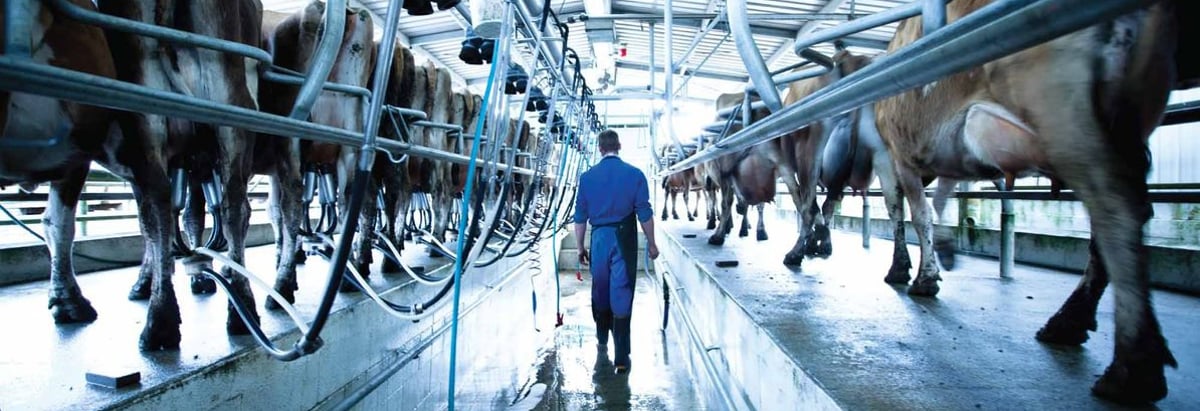- New Zealand
- /
- Food
- /
- NZSE:FCG
Why We’re Not Keen On Fonterra Co-operative Group Limited’s (NZSE:FCG) 6.5% Return On Capital

Today we'll look at Fonterra Co-operative Group Limited (NZSE:FCG) and reflect on its potential as an investment. To be precise, we'll consider its Return On Capital Employed (ROCE), as that will inform our view of the quality of the business.
First of all, we'll work out how to calculate ROCE. Then we'll compare its ROCE to similar companies. Last but not least, we'll look at what impact its current liabilities have on its ROCE.
What is Return On Capital Employed (ROCE)?
ROCE measures the 'return' (pre-tax profit) a company generates from capital employed in its business. All else being equal, a better business will have a higher ROCE. Ultimately, it is a useful but imperfect metric. Renowned investment researcher Michael Mauboussin has suggested that a high ROCE can indicate that 'one dollar invested in the company generates value of more than one dollar'.
So, How Do We Calculate ROCE?
The formula for calculating the return on capital employed is:
Return on Capital Employed = Earnings Before Interest and Tax (EBIT) ÷ (Total Assets - Current Liabilities)
Or for Fonterra Co-operative Group:
0.065 = NZ$833m ÷ (NZ$18b - NZ$5.1b) (Based on the trailing twelve months to July 2018.)
Therefore, Fonterra Co-operative Group has an ROCE of 6.5%.
Check out our latest analysis for Fonterra Co-operative Group
Want to help shape the future of investing tools and platforms? Take the survey and be part of one of the most advanced studies of stock market investors to date.
Does Fonterra Co-operative Group Have A Good ROCE?
One way to assess ROCE is to compare similar companies. In this analysis, Fonterra Co-operative Group's ROCE appears meaningfully below the 10% average reported by the Food industry. This performance is not ideal, as it suggests the company may not be deploying its capital as effectively as some competitors. Aside from the industry comparison, Fonterra Co-operative Group's ROCE is mediocre in absolute terms, considering the risk of investing in stocks versus the safety of a bank account. Readers may find more attractive investment prospects elsewhere.

When considering this metric, keep in mind that it is backwards looking, and not necessarily predictive. ROCE can be deceptive for cyclical businesses, as returns can look incredible in boom times, and terribly low in downturns. ROCE is, after all, simply a snap shot of a single year. If Fonterra Co-operative Group is cyclical, it could make sense to check out this freegraph of past earnings, revenue and cash flow.
What Are Current Liabilities, And How Do They Affect Fonterra Co-operative Group's ROCE?
Current liabilities include invoices, such as supplier payments, short-term debt, or a tax bill, that need to be paid within 12 months. Due to the way the ROCE equation works, having large bills due in the near term can make it look as though a company has less capital employed, and thus a higher ROCE than usual. To counter this, investors can check if a company has high current liabilities relative to total assets.
Fonterra Co-operative Group has total liabilities of NZ$5.1b and total assets of NZ$18b. Therefore its current liabilities are equivalent to approximately 28% of its total assets. It is good to see a restrained amount of current liabilities, as this limits the effect on ROCE.
Our Take On Fonterra Co-operative Group's ROCE
That said, Fonterra Co-operative Group's ROCE is mediocre, there may be more attractive investments around. Of course you might be able to find a better stock than Fonterra Co-operative Group. So you may wish to see this freecollection of other companies that have grown earnings strongly.
I will like Fonterra Co-operative Group better if I see some big insider buys. While we wait, check out this freelist of growing companies with considerable, recent, insider buying.
To help readers see past the short term volatility of the financial market, we aim to bring you a long-term focused research analysis purely driven by fundamental data. Note that our analysis does not factor in the latest price-sensitive company announcements.
The author is an independent contributor and at the time of publication had no position in the stocks mentioned. For errors that warrant correction please contact the editor at editorial-team@simplywallst.com.
Simply Wall St analyst Simply Wall St and Simply Wall St have no position in any of the companies mentioned. This article is general in nature. We provide commentary based on historical data and analyst forecasts only using an unbiased methodology and our articles are not intended to be financial advice. It does not constitute a recommendation to buy or sell any stock and does not take account of your objectives, or your financial situation. We aim to bring you long-term focused analysis driven by fundamental data. Note that our analysis may not factor in the latest price-sensitive company announcements or qualitative material.
About NZSE:FCG
Fonterra Co-operative Group
Fonterra Co-operative Group Limited, together with its subsidiaries, collects, manufactures, and sells milk and milk-derived products.
Good value with adequate balance sheet and pays a dividend.
Similar Companies
Market Insights
Community Narratives



